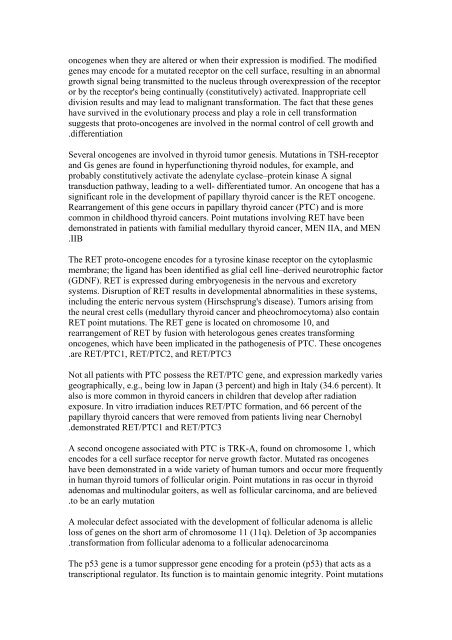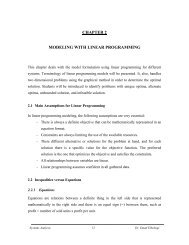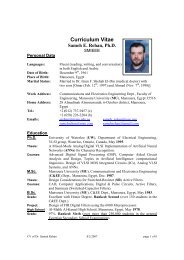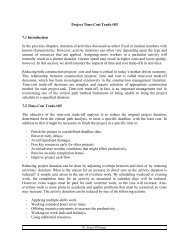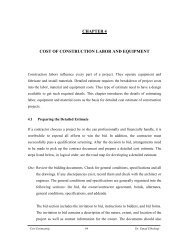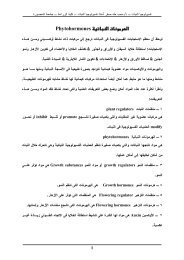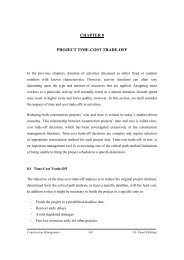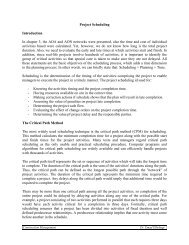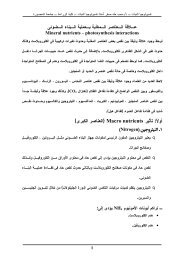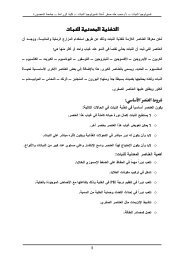Thyroid and Parathyroid
Thyroid and Parathyroid
Thyroid and Parathyroid
Create successful ePaper yourself
Turn your PDF publications into a flip-book with our unique Google optimized e-Paper software.
oncogenes when they are altered or when their expression is modified. The modified<br />
genes may encode for a mutated receptor on the cell surface, resulting in an abnormal<br />
growth signal being transmitted to the nucleus through overexpression of the receptor<br />
or by the receptor's being continually (constitutively) activated. Inappropriate cell<br />
division results <strong>and</strong> may lead to malignant transformation. The fact that these genes<br />
have survived in the evolutionary process <strong>and</strong> play a role in cell transformation<br />
suggests that proto-oncogenes are involved in the normal control of cell growth <strong>and</strong><br />
. differentiation<br />
Several oncogenes are involved in thyroid tumor genesis. Mutations in TSH-receptor<br />
<strong>and</strong> Gs genes are found in hyperfunctioning thyroid nodules, for example, <strong>and</strong><br />
probably constitutively activate the adenylate cyclase–protein kinase A signal<br />
transduction pathway, leading to a well- differentiated tumor. An oncogene that has a<br />
significant role in the development of papillary thyroid cancer is the RET oncogene.<br />
Rearrangement of this gene occurs in papillary thyroid cancer (PTC) <strong>and</strong> is more<br />
common in childhood thyroid cancers. Point mutations involving RET have been<br />
demonstrated in patients with familial medullary thyroid cancer, MEN IIA, <strong>and</strong> MEN<br />
. IIB<br />
The RET proto-oncogene encodes for a tyrosine kinase receptor on the cytoplasmic<br />
membrane; the lig<strong>and</strong> has been identified as glial cell line–derived neurotrophic factor<br />
(GDNF). RET is expressed during embryogenesis in the nervous <strong>and</strong> excretory<br />
systems. Disruption of RET results in developmental abnormalities in these systems,<br />
including the enteric nervous system (Hirschsprung's disease). Tumors arising from<br />
the neural crest cells (medullary thyroid cancer <strong>and</strong> pheochromocytoma) also contain<br />
RET point mutations. The RET gene is located on chromosome 10, <strong>and</strong><br />
rearrangement of RET by fusion with heterologous genes creates transforming<br />
oncogenes, which have been implicated in the pathogenesis of PTC. These oncogenes<br />
. are RET/PTC1, RET/PTC2, <strong>and</strong> RET/PTC3<br />
Not all patients with PTC possess the RET/PTC gene, <strong>and</strong> expression markedly varies<br />
geographically, e.g., being low in Japan (3 percent) <strong>and</strong> high in Italy (34.6 percent). It<br />
also is more common in thyroid cancers in children that develop after radiation<br />
exposure. In vitro irradiation induces RET/PTC formation, <strong>and</strong> 66 percent of the<br />
papillary thyroid cancers that were removed from patients living near Chernobyl<br />
. demonstrated RET/PTC1 <strong>and</strong> RET/PTC3<br />
A second oncogene associated with PTC is TRK-A, found on chromosome 1, which<br />
encodes for a cell surface receptor for nerve growth factor. Mutated ras oncogenes<br />
have been demonstrated in a wide variety of human tumors <strong>and</strong> occur more frequently<br />
in human thyroid tumors of follicular origin. Point mutations in ras occur in thyroid<br />
adenomas <strong>and</strong> multinodular goiters, as well as follicular carcinoma, <strong>and</strong> are believed<br />
. to be an early mutation<br />
A molecular defect associated with the development of follicular adenoma is allelic<br />
loss of genes on the short arm of chromosome 11 (11q). Deletion of 3p accompanies<br />
. transformation from follicular adenoma to a follicular adenocarcinoma<br />
The p53 gene is a tumor suppressor gene encoding for a protein (p53) that acts as a<br />
transcriptional regulator. Its function is to maintain genomic integrity. Point mutations


